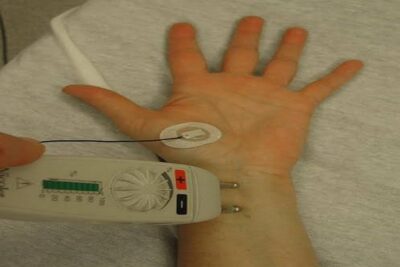Nerve conduction study and electromyography
Nerve conduction study and electromyography (NCS – EMG) :
Electromyography (EMG) and nerve conduction studies (NCS) for Myositis Diagnosis. This test has two parts. Nerve conduction studies are used to measure the health of your nerves. … During the EMG, the doctor will insert a very thin needle into one muscle at a time. The impulse may feel like an electric shock. You may feel some discomfort depending on how strong the impulse is. You should feel no pain once the test is finished. Often, the nerve conduction test is followed by electromyography (EMG).The nerve conduction study stimulates specific nerves and records their ability to send the impulse to the muscle. The study can show where there is a blockage of the nerve pathway. Nerve conduction studies are done to: … Help diagnose nerve disorders, such as carpal tunnel syndrome or Guillain-Barre syndrome.
EMG and NCS are tests that measure the electrical activity of the muscles and nerves of the body, usually to an arm or a leg. The tests can help identify nerve injury or muscle disease such as carpal tunnel syndrome, a pinched spinal nerve, peripheral neuropathy, myositis, or ALS.

Electromyography ( EMG) :
EMGs can detect abnormal muscle electrical activity in many diseases and conditions. It is particularly useful in conditions such as muscle inflammation or myositis, pinched peripheral nerves like carpal tunnel syndrome, disc herniation with pinched nerves, ALS, and many more conditions. But if your muscle is damaged or has lost input from nerves, it may have abnormal electrical activity during rest. … An abnormal EMG result may be a sign of a muscle or nerve disorder, such as: Polymyositis. This is an inflammatory muscle disease that causes decreased muscle power.
EMG and NCS are tests that measure the electrical activity of the muscles and nerves of the body, usually to an arm or a leg. The tests can help identify nerve injury or muscle disease such as carpal tunnel syndrome, a pinched spinal nerve, peripheral neuropathy, myositis, or ALS.

